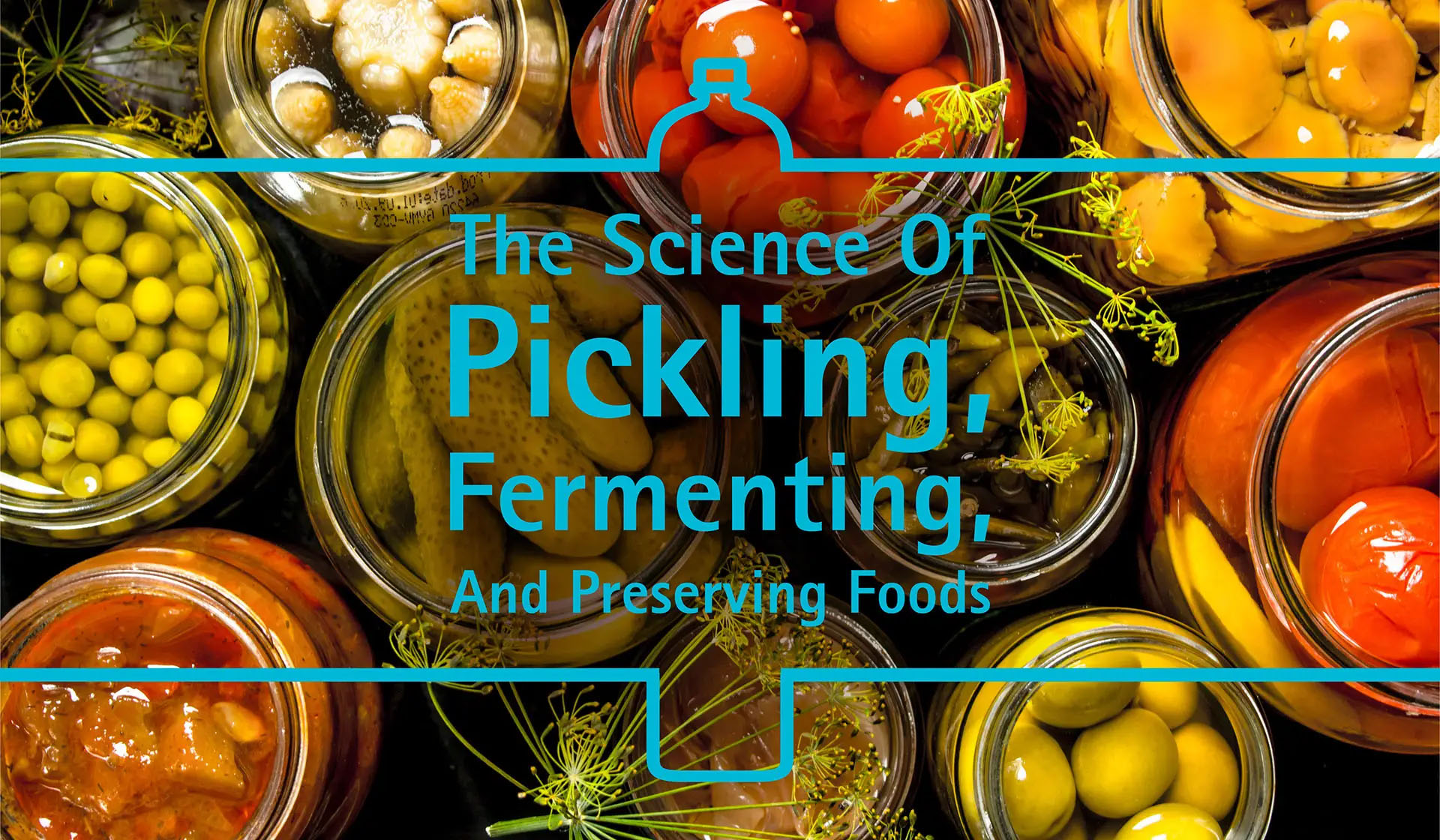The Science of Pickling, Fermenting, and Preserving Foods

Today, pickled and fermented foods are more popular than ever in the United States, due in large part to the expansion of Asian cuisine across the country. As more people embrace the role of Asian fusion in their cooking, pickled veggies are finding their way into a wide variety of dishes. However, we find that many people still don’t really understand the science of pickling or how it differs from fermenting.
Knowing the science behind pickling and fermenting can help cooks better integrate these ingredients into their meals, and it also helps businesses sell the best products possible. While the words “fermenting” and “pickling” are sometimes treated as synonyms, they actually describe two entirely different processes. With this in mind, let’s discuss how pickling and fermenting work, and how you can use this information to further develop your business plans.

What Is Pickling?
Pickling has been part of world cuisine for millennia, as it can be traced back to the pickling of cucumbers thousands of years ago in India. The process isn’t complicated, as it revolves around the use of acid brine to preserve food and add a sour note to its flavor profile. You can use vinegar, salted water, sugar water, or lemon juice as a pickling brine. No matter which one you choose (or if you use a combination), you’ll soak the food in the brine in a tightly sealed jar. Pickling in the United States is most popular with vegetables, but pickled fruits, meats, and fish are also quite common.

What Is Fermenting?
If your company will be fermenting pickles, the science changes a bit. This method has also been around for thousands of years, as the first recorded instances of fermenting food came from China, nearly 10,000 years ago. The fermenting process involves using bacteria and probiotics to alter foods and preserve them. With fermented foods, the bacteria transform sugars into acidic compounds, which change the food’s flavor and create probiotics.

The Increasing Popularity of Pickling
Today, pickling is a common trend among entrepreneurs in the food industry. Taking a quick look at the market for commercially pickled foods, it’s easy to see why. The prepacked pickled foods market has taken off in the last few years, with a steady growth rate each year since 2015. By 2020, the global market for commercially pickled vegetables, fruits, meats, and fish was valued at nearly $8.5 billion. In other words, this industry generates more than one dollar per person in the world each year!
Industry analysts say that they expect the packed pickles market to continue expanding by roughly 3.5% year over year from 2019 through 2025 — from $8.45 billion to $10.6 billion in just a few years — so there’s an opportunity here for enterprising entrepreneurs. In particular, these analysts say that consumers’ increased willingness to try foreign cuisines has driven interest in pickled foods to new heights.

What Is the Most Popular Pickled Food?
It may surprise you to learn that pickled cucumbers, while highly popular in the United States, are not the largest global market for commercially pickled foods. The pickled fruit market has the highest share of this industry, exceeding 45% of the total annual revenue for this segment. That said, pickled vegetables are projected to show the most growth of any pickled food in the coming years, as industry analysts project a 4% annual increase in demand for commercially pickled vegetables through 2025.
Meanwhile, even though packed pickled meats and seafood products are also gaining popularity, this segment continues to lag behind those of pickled fruits and veggies. However you look at the data, the signs are clear: more and more people around the world are discovering the benefits of the science behind pickling.

Packaging Pickled, Fermented, and Preserved Foods
Glass jars have long been a favorite for pickling and fermenting, and that hasn’t changed. Nearly two-thirds of pre-packed pickled products in the world are still packaged in glass or plastic jars. Using glass jars is supported by the science of pickling, as they protect their contents from the sun’s damaging rays and also prevent unwanted interactions between packing materials and the pickled food itself.
Plastic jars are also a common choice for these products, as they are lightweight compared to glass and also present a much lower risk of breaking, cracking, and leaking. However, it doesn’t seem likely that plastic jars will ever surpass glass jars for pickled foods, especially given the environmental concerns regarding plastics.
In short, it’s hard to go wrong with a classic glass jar for pickled foods. There is some research indicating that disposable pouches will gain some popularity in the coming years, but it’s highly unlikely that the glass jar will be replaced anytime soon.

In Conclusion
The science of pickling has led to an increasingly popular market for pickled and fermented products around the world, especially in North America, which consumes nearly half of all pre-packaged pickled products produced in the world each year. If your business wants to take advantage of this growing market, BottleStore.com has everything you need to package your pickled products!
As we discussed earlier, the science behind pickling indicates that glass jars have some clear-cut advantages for packaging pickled foods, and BottleStore.com has many different options for you to choose from. For instance, our 16-oz flint economy round glass jar is an ideal choice that comes with your choice of four different closures. If you prefer a plastic package, we have a wide variety of recyclable plastic jars to suit your packaging needs.The science of pickling is here to stay, and BottleStore.com has the jars and lids you need to sell your delicious pickled, fermented, and preserved foods. Give us a call today to learn more.
